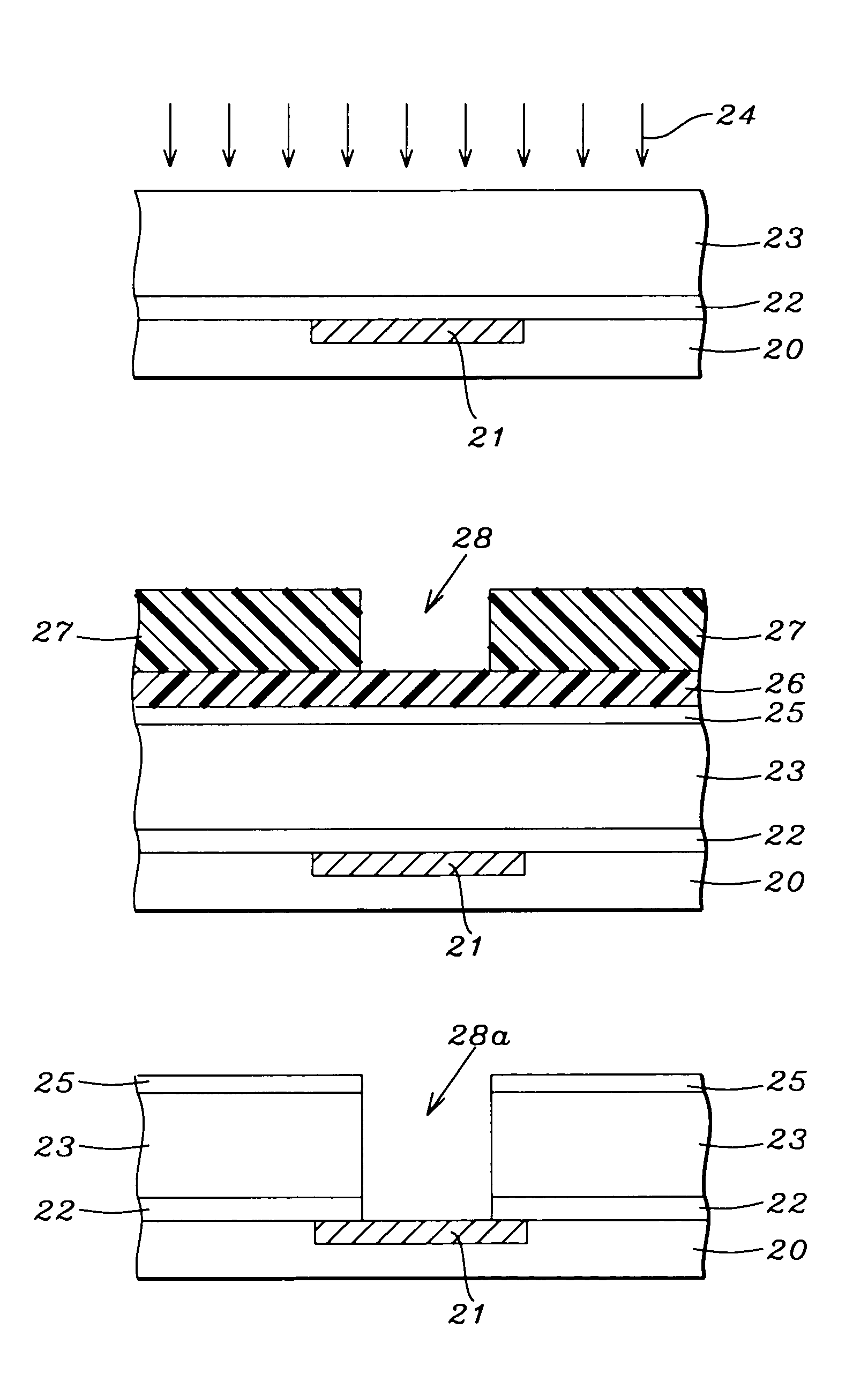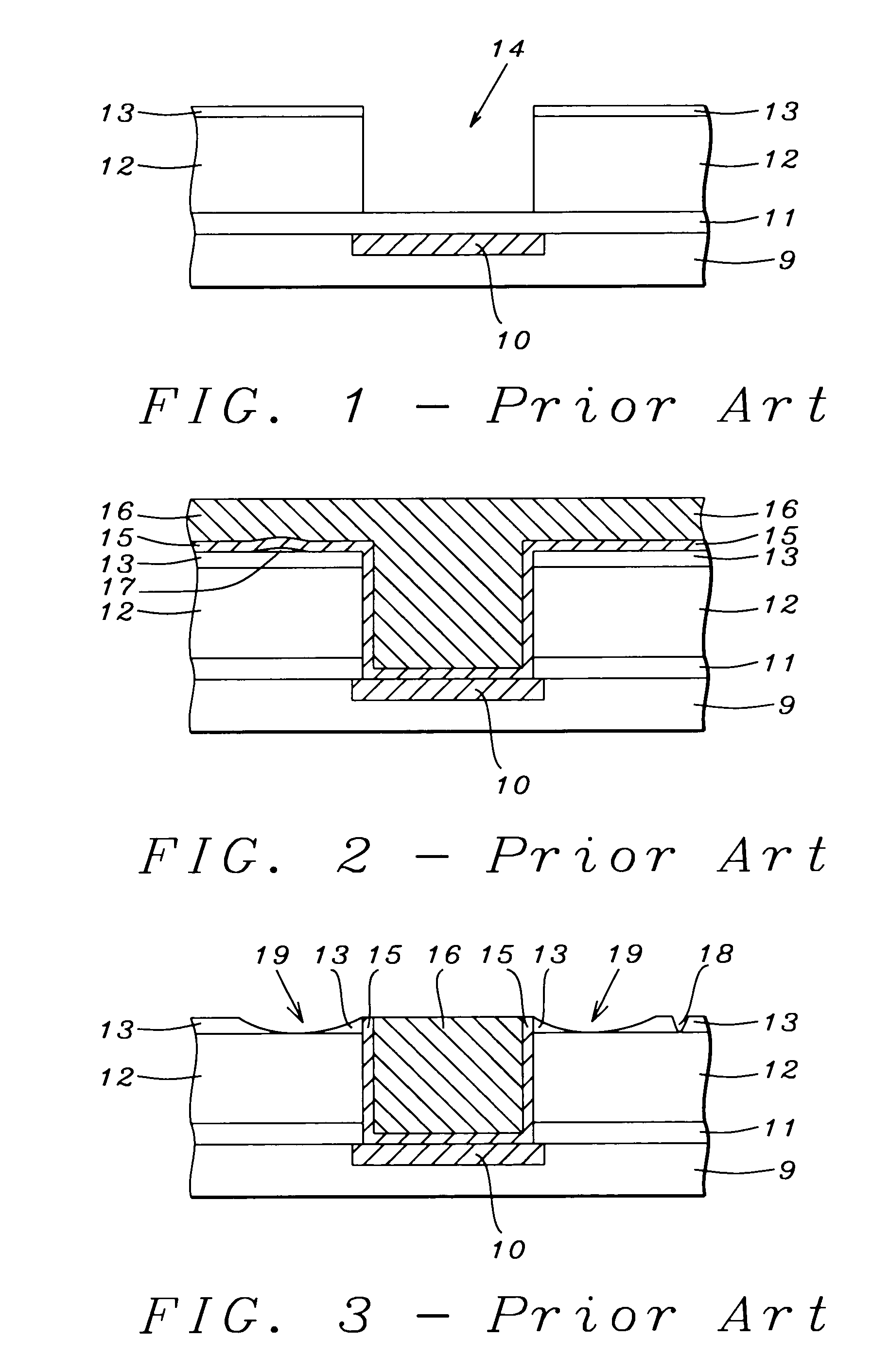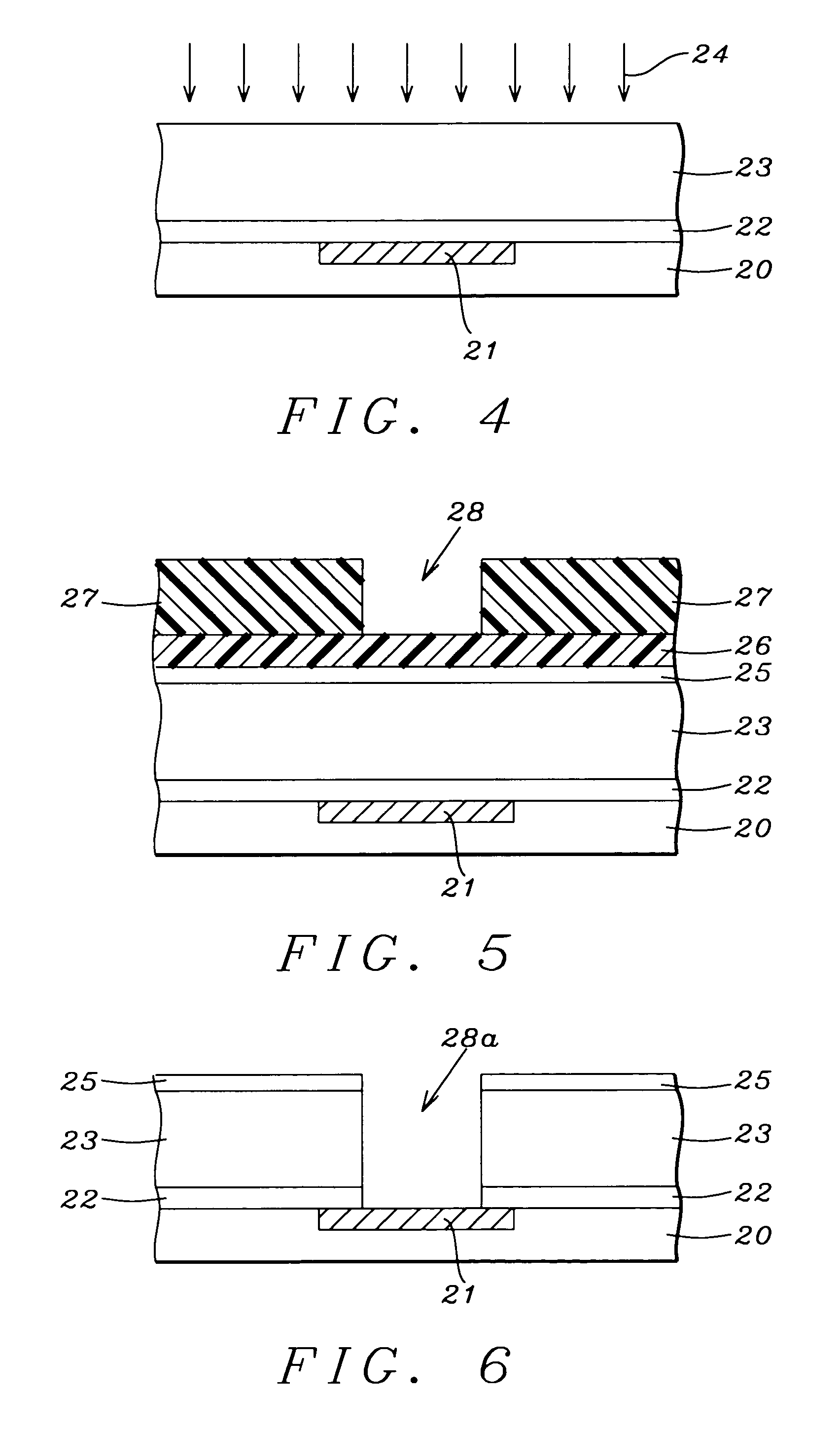SiOCH low k surface protection layer formation by CxHy gas plasma treatment
- Summary
- Abstract
- Description
- Claims
- Application Information
AI Technical Summary
Benefits of technology
Problems solved by technology
Method used
Image
Examples
first embodiment
[0022]A first embodiment is set forth in FIGS. 4 to 8. These figures are not necessarily drawn to scale and are presented as examples and not as limitations of the scope of the present invention. Referring to FIG. 4, a substrate 20 is provided that is typically silicon and which generally contains one or more conductive layers such as layer 21 and insulating layers (not shown). The conductive layer may be separated from an adjoining insulating layer by a barrier metal layer (not shown) that forms a liner in a hole or trench to protect the conductive layer from trace amounts of moisture or chemical residues in the insulating material. A method such as a CMP step is used to planarize conductive layer 21 so that it is coplanar with the surface of substrate 20.
[0023]An etch stop layer 22 comprised of a material such as silicon nitride, silicon oxynitride, or silicon carbide is deposited by a CVD or PECVD technique on substrate 20 and conductive layer 21. Etch stop layer 22 protects cond...
second embodiment
[0032]A second embodiment is illustrated in FIGS. 9 to 13 in which a plasma treatment to modify a low k dielectric layer is comprised of two gases that can act together or separately. Referring to FIG. 9, a substrate 40 is provided that is typically silicon and which generally contains one or more conductive layers such as layer 41 and insulating layers (not shown). The conductive layer may be separated from an adjoining insulating layer by a barrier metal layer (not shown) that forms a liner in a hole or trench to protect the conductive layer from trace amounts of moisture or chemical residues in the insulating material. A CMP step is used to planarize conductive layer 41 so that it is coplanar with the surface of substrate 40.
[0033]An etch stop layer 42 comprised of a material such as silicon nitride, silicon oxynitride, or silicon carbide is deposited by a CVD or PECVD technique on substrate 40 and conductive layer 41. Etch stop layer 42 protects conductive layer 41 from aqueous ...
PUM
 Login to View More
Login to View More Abstract
Description
Claims
Application Information
 Login to View More
Login to View More - R&D
- Intellectual Property
- Life Sciences
- Materials
- Tech Scout
- Unparalleled Data Quality
- Higher Quality Content
- 60% Fewer Hallucinations
Browse by: Latest US Patents, China's latest patents, Technical Efficacy Thesaurus, Application Domain, Technology Topic, Popular Technical Reports.
© 2025 PatSnap. All rights reserved.Legal|Privacy policy|Modern Slavery Act Transparency Statement|Sitemap|About US| Contact US: help@patsnap.com



